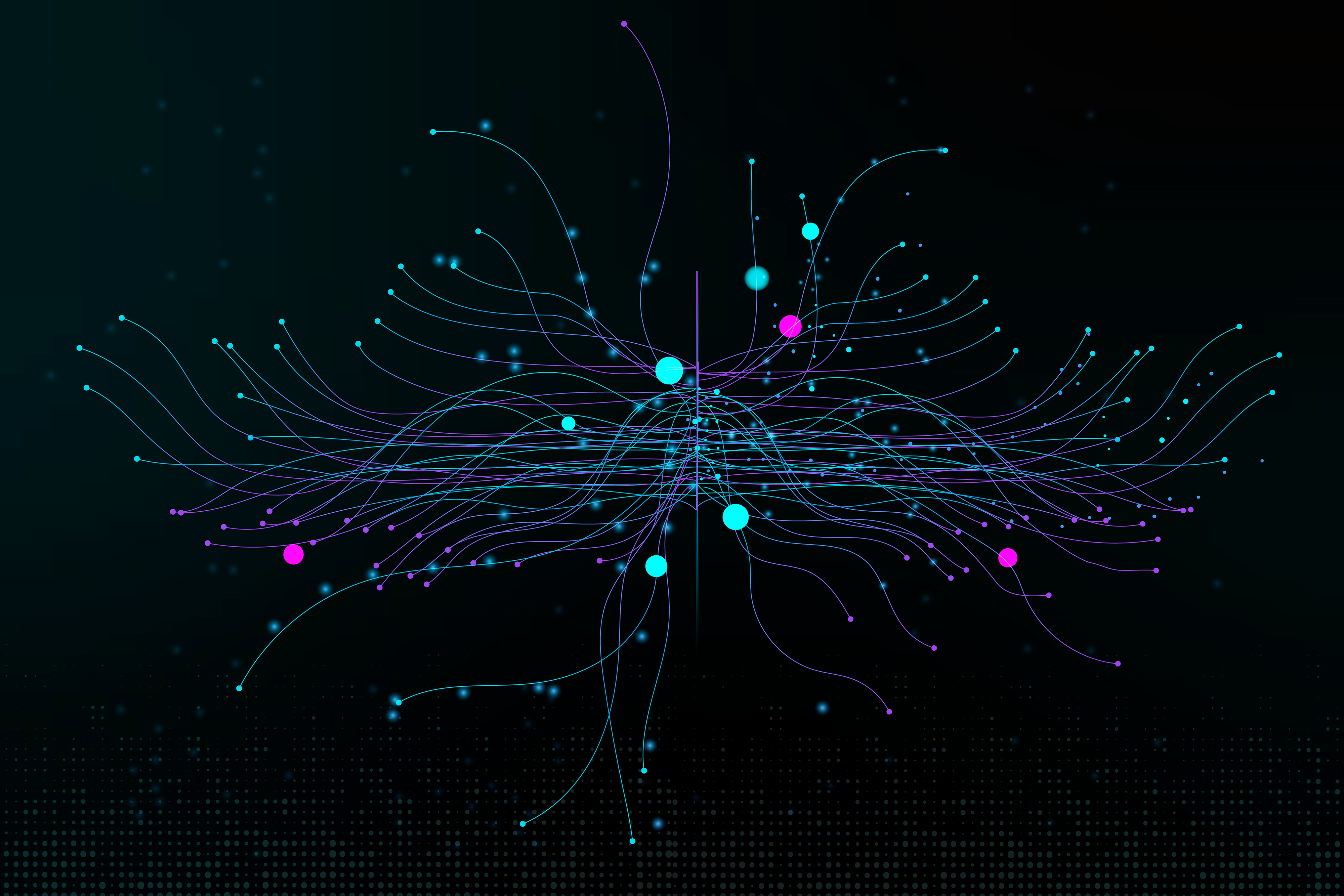AI is leading the world and neural networks are what pushes the AI capabilities out of their boundaries. They make the AI function like human brains, and increases its efficiency.
In this blog we will cover all about neural networks, from its basics and architecture, to use cases, and benefits.
What are Neural Networks?
Neural networks are a series of algorithms that let AI models mimic the human brain to recognize the underlying patterns in complex user inputs.
Just like neurons in the human brain, neural networks have artificial neurons that further consist of layers of nodes: input layer, hidden layers, and output layer. All these neurons have specific weights and threshold values, and they transmit the information to the next node or neuron as soon as the threshold value is met.
How Do Neural Networks Work?
A human brain has a network of interconnected neurons that send information through electrical signals to each other. Similar to it is the working of neural networks that function due to the networking of artificial neurons (basically the software modules) called nodes.
Basic Architecture of Neural Network
Input Layer
Nodes in the input layer collect or receive information from the outside. They process the data, analyze it, classify it, and then pass it on to the next layer.
Hidden Layers
There are multiple hidden layers that receive the information from the input layer, process it, and analyze it to pass it further onto the output layers.
Output Layer
Based on the hidden layer processing, the output layer provides the final output. For instance, if the query requires a yes or no answer, one of the output nodes will give 1 or 0 as the output.
Deep Neural Network Architecture
A deep neural network consists of millions of artificial neurons connected with each other. Each node has a value called weight, which defines the number of connections it has with other nodes. Nodes with higher weights have more influence on the other nodes. Deep neural networks, or deep learning models, are great at handling complex queries and can map any input type to the output. However, they need to be trained with millions of training data sets as compared to thousands that any other machine learning model.
Types Of Neural Networks
Below are the types of neural networks based on how data flows from the input layer to the output layer:
Feed-Forward Neural Networks
As the name suggests, feed-forward neural networks function in a unidirectional manner. They move information from the input layer to the output in a single direction. Feedback neural networks use feedback mechanisms to improve their functioning over time. Moreover, they have different applications, like regression, pattern, and facial recognition. A feed-forward neural network type with three or more layers, including an input layer, one or more hidden layers, and an output layer, is called Multi-Layer Perceptron (MLP).
Recurrent Neural Networks
Recurrent neural networks take the output and send it back to the network. This leads to the theoretical learning and improvement of the model. Historical processes get saved in each node for future usage. This is crucial for the networks that show incorrect outputs so that they can introspect why the result comes out to be wrong. Recurrent neural networks are widely used in text-to-speech applications.
Convolutional Neural Networks
Convolutional neural networks (CNNs) or ConvNets receive the input and sort them into categories. The architecture consists of an input layer, an output layer, and multiple hidden convolutional layers. These layers record pieces of an image and break them further until they generate a valuable result. Convolutional neural networks are widely used to support computer vision models or image processing applications.
Deconvolutional Neural Networks
Working opposite to convolutional neural networks, deconvolutional neural networks. They detect the items considered important earlier but discarded by the convolutional network during the execution process. These networks are also used in image-processing applications.
Modular Neural Networks
Modular neural networks consist of different neural networks that function independently to provide results. These networks do not communicate with each other in any form during the analysis. Each independent network handles a particular part of the bigger picture. This is done to increase the model efficiency for complex and elaborative processes.
Applications/ Use Cases of Neural Networks.
Neural networks set the base for most AI applications in different industries. Let us go through some applications of neural networks given below:
Computer Vision
Computer vision models make the AI systems interpret and respond to the visual inputs. In combination with neural networks, computer vision can differentiate and recognize visuals similar to humans. Thus, neural networks make the processing of images for complex tasks easy.
Applications Of Computer Visions:
-
- Visual recognition in self-driving cars.
-
- Content authentication and safety mechanisms in social media or video streaming platforms.
-
- Facial recognition applications
Natural Language Processing
Natural language processing (NLP) is a widely used AI technique for processing and answering textual user inputs. Neural networks in NLP allow the AI model to understand the context and meaning of the text data or document and drive insights from it. It lets machines understand human language.
Applications Of Natural Language Processing:
-
- Conversation, bots, chatbots, or virtual assistants respond to the user’s queries.
-
- Text classification or categorization.
-
- Summarization models or generative AI
-
- Business intelligence analysis
Speech Recognition
Humans have different languages, voice, pitch, tone, accent, and speech patterns. Neural networks assist the speech recognition models in understanding such complex voice inputs.
Applications Of Speech Recognition:
-
- Classification of calls in call centers.
-
- Summarize meetings or medical conversations in real-time.
-
- Automated generation of video subtitles.
Recommendation Engines
Apart from all the above, neural networks are a part of AI recommendation systems that are widely used to drive sales and marketing. They track user activities and habits to find products and services tailored to their wants and needs. These tailored recommendations not only save the customer’s time from surfing the internet but also boost the sales and profit of the company.
Benefits of Neural Networks
The human brain-like functioning of neural networks allows the AI models to handle complex tasks and work efficiently. Currently, it is being tried to expand the domains of neural networks and discover more applications. Till then, let us explore the benefits of neural networks that are explained in key points given below:
Capability to Handle Complex Data
Neural networks have the ability to handle complex data and produce insights from the same. Thus, they are helpful in performing complex tasks like pattern recognition, nonlinear mapping, pattern recognition, and much more.
Learning and Adaptability
Neural networks have feedback mechanisms that enable them to learn from the correct and incorrect outputs and adjust the weights accordingly. This increases their accuracy and performance over time.
Parallel Processing
Neural networks can perform different processing and computations parallelly, which makes them faster and more efficient.
Error and Noise Robustness
Neural networks have a certain tolerance for large, low-quality datasets that have missing or incorrect values. This capability makes them the best fit for various practical and real-world applications.
Scalability
Robustness to noise and errors and the ability to handle large and complex data increases the scalability of neural networks, and they can be worked on different computer operational systems and processors.
If you are looking for cutting-edge AI solutions leveraging the power of neural networks to perform complex tasks, go nowhere because Build Future AI has something in its box for you!
Contact us via email: business@buildfuture.ai and discover how can we help you grow your business!




